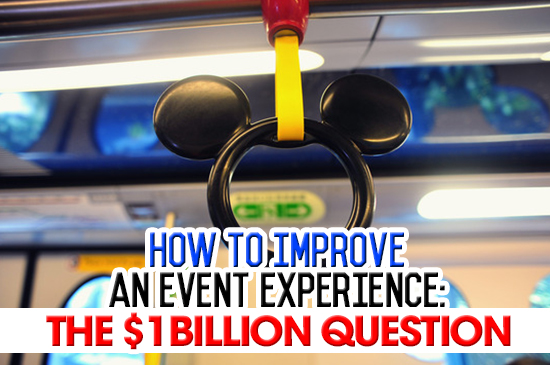Event tech is useless without clear purpose. This article looks at how tech has married the visitor experience, and what kind of kids it’s going to have.

Events are becoming increasingly intelligent. That’s no great revelation. We all know, slowly but surely, technology is going to be utterly vital to event success (and failure). You don’t have to look far for talk about how tech is being used in delegate tracking.
Low-cost transmitters and so called “smart shows” (where visitors receive information while they’re out and about at a show) will get at least 10 mentions at any events forum. But, to me at least, it still feels very reactive rather than proactive.
Wait, What the Heck is a “Low-Cost Transmitter”?
If you’re anything like me, LCT’s got lost in the endless stream of tech news and I hadn’t heard about them until a few months ago. They’re pretty nifty pieces of kit I discovered. A venue might hide these low energy transmitters around a venue, and they link up with a visitors Bluetooth enabled device to deliver information. They’re proving very popular – a single battery can last up to 2 years. But think; could they go a step further? Instead of reacting to where I am, why not predict where I’m going to be?
The Truth is Out There
Now you could say “hold up Dave, you’re asking too much! This is all very Minority Report.” But am I?
I recently visited Walt Disney World in Florida, and their Imagineers have been quietly working away in the background to make something called the MagicBand. Yes, I know Disney spent $1billion getting it right, but the principle is very simple and they did have 40 square miles of space to think about.
The MagicBand is essentially a wristband that has a tiny radio transmitter inside, releasing information about you in a 40 foot radius as you walk around. Not too different from an LCT and your Bluetooth enabled device, right? Well, that’s where the comparison ends.
How is it Different?
You buy the band as your ticket and link it up to your phone, credit card, hotel/restaurant reservation, ride pass and photo account – and most importantly – it tells you and the park where you need to be before you get there.
The band gives you the ability to set an itinerary for your entire visit, down to where you’re going to eat, what day and time you’ll arrive and even what each member of your party is going to have served. You don’t need to be shown to a seat because the receivers in the furniture triangulate your position and your food finds you, plus you don’t even need to exchange cash at the end – you just touch your band to touch point and roll out the door. You can read the full story here.
So How Does this Relate Back to Exhibitions and Events?
Not everyone has $1billion to spend, and Disney have certainly made sure they’ve patented the technology, but the alternatives are out there. A decent LCT can cost less than £20 ($30) per unit – it’s just the way we currently use them that needs to change.
Instead of telling me that the queue for the toilet is shorter in the next hall, after I’ve stood there for 5 minutes, tell me as I’m walking towards it! “DAVE! Nature calling? Answer over in hall 3, no one’s there!” or “Dave, that meet and greet you wanted to attend is happening now, follow me!” as a map pops up and shows me the way.
And What About Exhibitors?
We tend to focus a lot of our attention on visitors, but there are many applications for exhibitors too:
– You could see how long they’ve stood waiting at their stand and send someone over to help, or they could see where the nearest engineer is and collar them.
– You could sync delivery of items to an exhibitor’s stand just as they arrive at the venue, no more queues at the desk.
– You could even have cashless food outlets that have an exhibitor’s order ready when they arrive – giving them more time on their stand (something I sorely needed at a large event I was exhibiting at in London recently – seriously, 20 minutes for the world’s smallest coffee?)
– An exhibitor could see when a client they’ve set a meeting up with is on their way – giving them vital time to prepare and get away from any conversations they’ve managed to get stuck in.
In Conclusion
Now that the tools are more readily available, this is where I see exhibitions and events going within the next 5 years (probably sooner). The economic crash has made us all strive for efficiency in all aspects of our lives, not just with the check book (who uses those anymore?) Since we discovered fire, technology has always been designed with the intention of making our lives easier.
But what’s the flip side? At what point do we draw the line between helpful tech and big brother style snooping? How easily can those pesky hackers get into the systems? Where does it sit with data protection? At what point should the magic end?
 This is a guest post by Dave Lane. He is the Content Executive for GES EMEA. He has been working in the events industry since 2012. Dave’s mission is use a mixture of empathy and humour (gasp!) to help exhibitors get more bang for their buck.
This is a guest post by Dave Lane. He is the Content Executive for GES EMEA. He has been working in the events industry since 2012. Dave’s mission is use a mixture of empathy and humour (gasp!) to help exhibitors get more bang for their buck.





